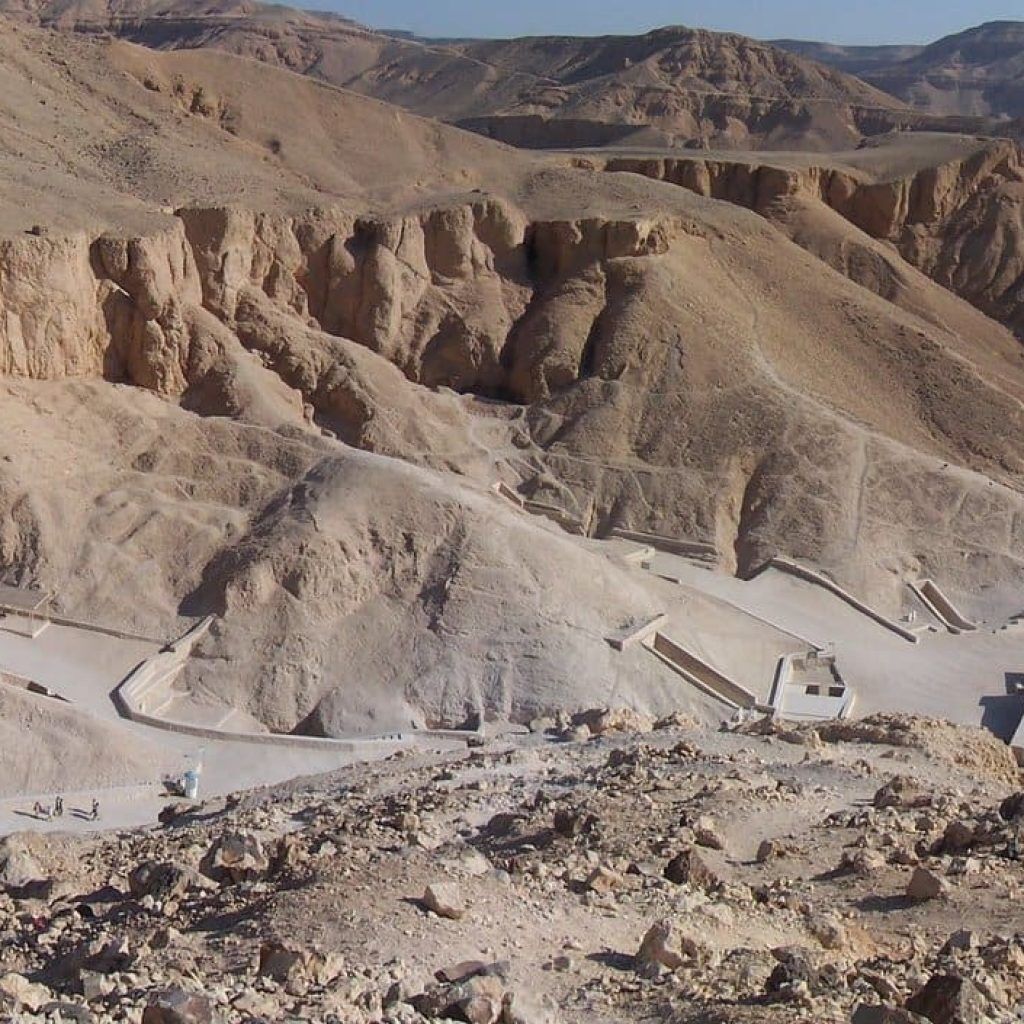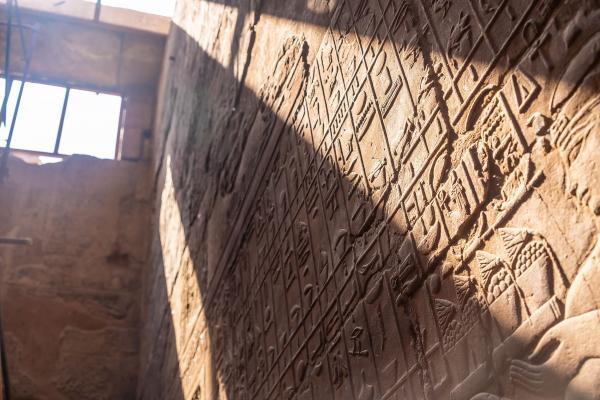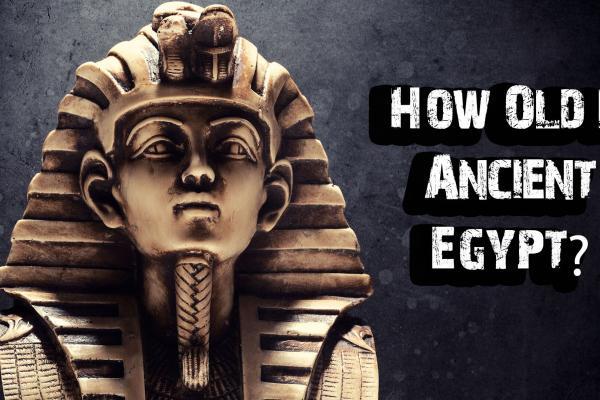
KV A
General Site Information
- Structure: KV A
- Location: Thebes West Bank, Thebes
- Owner: Unknown
- Other designations: WV A, WVA
- Site type: Tomb
KV A, located in the main wadi of the West Valley, is cut into the base of the cliff at the head of a watercourse 60 meters (197 feet) south of the entrance to KV 22. An entryway of rough steps (A) descends to a gate (B) that still retained much of its rubble blocking. The single-chamber B inside the gate was partly filled with limestone chips and dirt. Numerous fragments of broken pottery vessels, some with blue painted decoration, were found in the debris. Jar sealings and dockets name Amenhotep III and give dates in his regnal years 32 and 37. Other artifacts are associated with tomb decoration, including limestone ostraca with sketches, ceramic fragments used for holding pigments, lumps of plaster, and rope.
- Noteworthy features: The original blocking of gate B was found almost intact.
Axis in degrees: 222.72
Axis orientation: Southwest
Site Location
- Latitude: 25.44 N
- Longitude: 32.36 E
- Elevation: 178.01 msl
- North: 99,623.449
- East: 93,564.798
- JOG map reference: NG 36-10
- Modern governorate: Qena (Qina)
- Ancient nome: 4th Upper Egypt
- Surveyed by TMP: Yes
Measurements
- Maximum height: 2.42 m
- Minimum width: 1.71 m
- Maximum width: 4.86 m
- Total length: 9.64 m
- Total area: 28.53 m²
- Total volume: 42.14 m³
Additional Tomb Information
- Entrance location: Base of a sheer cliff
- Owner type: Unknown, probably non-royal
- Entrance type: Staircase
- Interior layout: Chamber
- Axis type: Straight
- Cordage
- Jewelry
- Scarabs and seals
- Vessel stands
- Vessels
- Written documents
It is not known whether this tomb’s construction was contemporary with that of KV 22 (Amenhotep III) or if it predates it. From the nature of the artifacts found in the debris, it appears to have been first used to store equipment during the construction of KV 22. Subsequently, vessels belonging to Amenhotep III’s burial equipment were stored here. Other artifacts belonging to the king’s burial, such as part of a leather quiver, are thought to have come from debris removed from KV 22. There was no evidence from the artifacts of a burial there.
Dating: This site was used during the following period(s):
New Kingdom, Dynasty 18, Amenhotep III (or earlier)
History of Exploration
- Hay, Robert (1825-1835): Visit
- Lepsius, Carl Richard (1844-1845): Excavation
- Ayrton, Edward Russell (1905): Excavation
- Chassinat, Emile (1905-1906): Excavation
- Burton, Harry (1912): Excavatio
- Jones, Ernest Harold (1912): Excavation
- Waseda University (1993-1994): Excavation
Conservation
Conservation history: The remaining ancient blocking of the gate has been supplemented, following the clearance of the tomb, with additional rubble blocking. Site condition: Much of the original blocking of the tomb remains.


